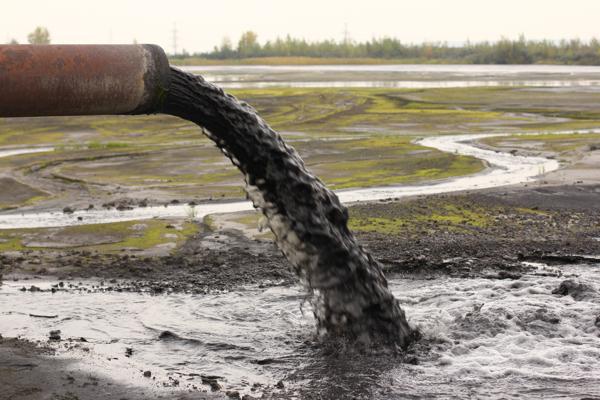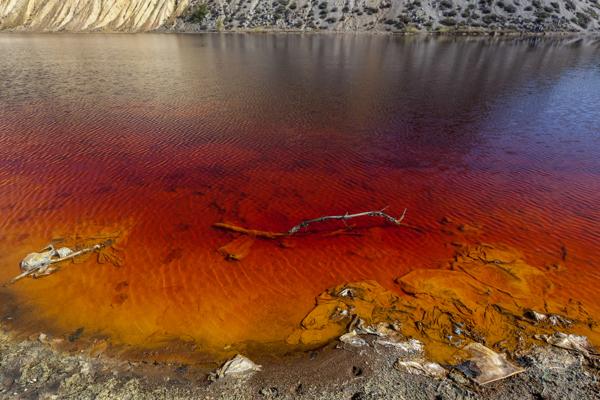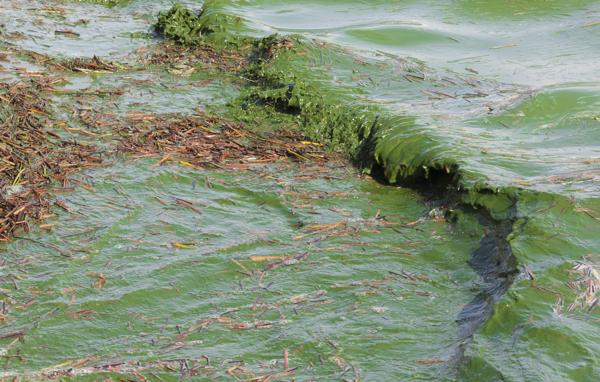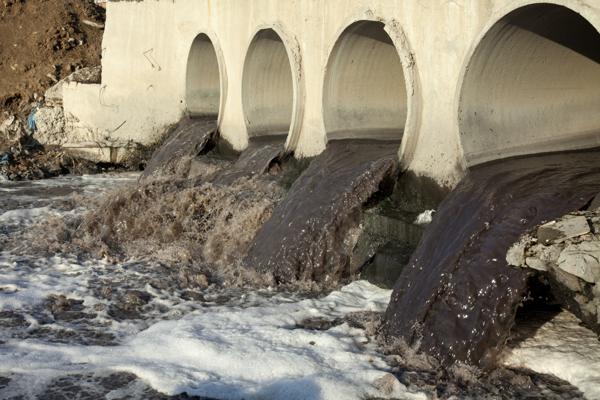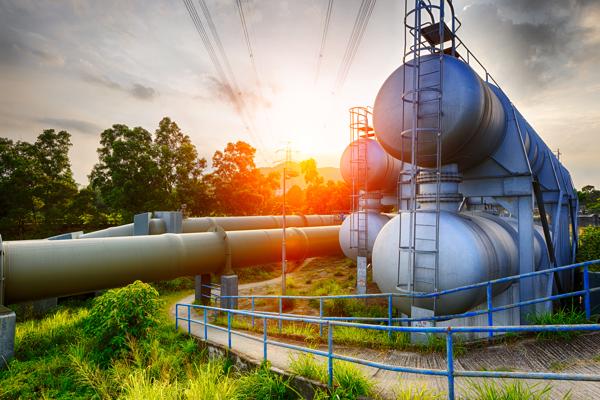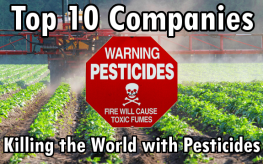 |
 |
 |
 |
Photo Credit for the Images above: iBanPlastic Bottles Bags Straws
This section of the Series on Global Warming and our Dying Oceans will focus on Industrial Chemicals and their impact on our Environment. These chemicals affect more than just the environment but will keep our focus on the environment for now. This is not an ALL INCLUSIVE discussion. There are so many more types, industries and levels of impact that we won’t be covering here. There is only so much time and space. The hope is that your eyes will be opened and you will be inspired to research further on your own. At least you might be more informed than before and able to make some educated choices as a result.
![]()
Facts
- Each and every second 310 Kg of toxic chemicals are released into our air, land, and water by industrial facilities around the world.
- This amounts to approximately 10 million tons (over 21 billion pounds) of toxic chemicals released into our environment by industries each year.
- Of these, over 2 million tons (over 4.5 billion pounds) per year are recognized carcinogens. This amounts to about 65 Kg each second.
Definitions
- toxic chemicals: substances that can cause severe illness, poisoning, birth defects, disease, or death when ingested, inhaled, or absorbed by living organisms.
- recognized carcinogens: as defined by the Occupational Safety & Health Administration (view OSHA Carcinogens list)
- release: any spilling, leaking, pumping, pouring, emitting, emptying, discharging, injecting, escaping, leaching, dumping or disposing into the environment (as defined by EPCRA, U.S. Emergency Planning and Community Right-to-Know Act, section, 329-8)
- environment: includes water, air and land and the interrelationship which exists among and between water, air, and land and all living things.
Causes and Effects of Industrial Water Pollution You Never Noticed
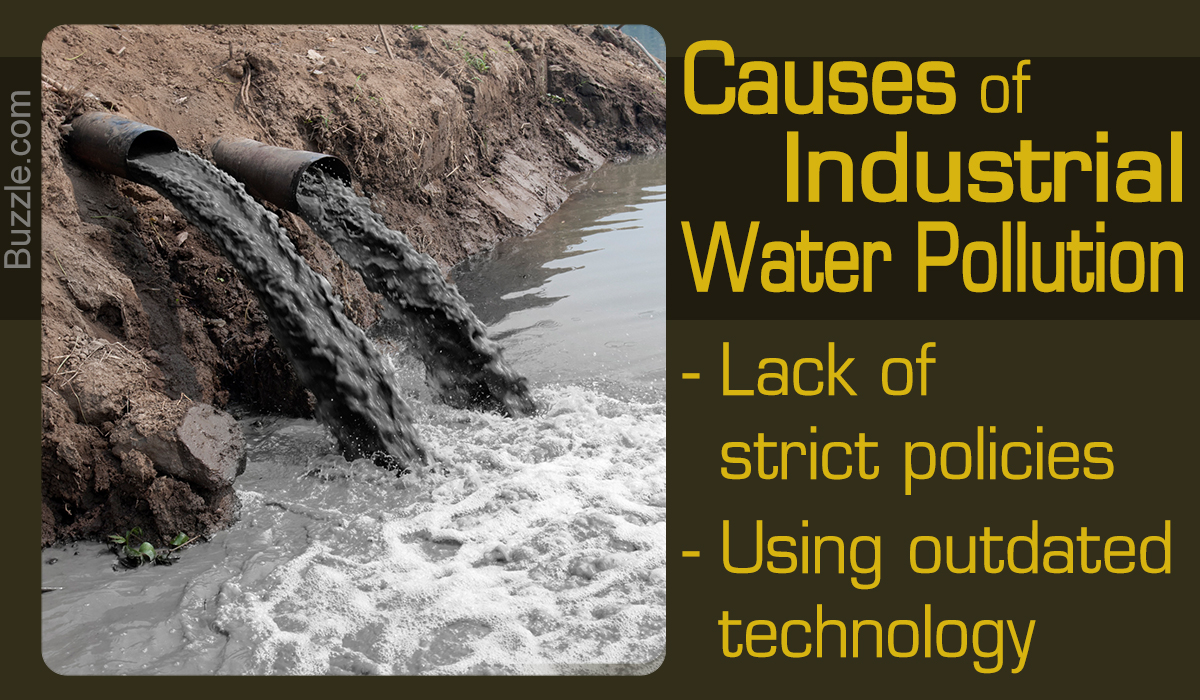
Industrial water pollution is caused by the discharge of harmful chemicals and compounds into water, which makes it unsuitable for drinking and other purposes. Although 70% of the Earth is covered by water, only water bodies like lakes, ponds, rivers, reservoirs, and streams provide us with fresh water, and so, keeping them clean is an issue of survival not only for humans but for all other forms of life
Since the industrial revolution, we have achieved a lot; our manufacturing processes have become more efficient and productive, science has become much more advanced, and our life has transformed a great deal. But perhaps nothing comes without a price. All the advancement and development witnessed in the last few centuries have also brought with them a wide spectrum of problems, water pollution being one of them.
Pollution refers to the contamination of the environment by harmful and waste materials, which bring about a significant change in the quality of the surrounding atmosphere. Environmental pollution can be classified as air pollution, water pollution, and noise pollution. Water pollution signifies contamination of water bodies, which makes their water unfit for drinking and other purposes. There are basically five primary sources of water pollution―domestic sewage, agricultural runoff, industrial effluents, wastewater from septic tanks, and stormwater runoff.
Causes of Industrial Water PollutionLack of Stringent PoliciesThere is a lack of strict pollution control policies in many countries of the world, especially in the developing and underdeveloped countries. In many countries, policies are there, but the apathy of the enforcement authorities has allowed industries to take such laws for granted and bypass them easily.Some industries still rely on old and outdated technologies that produce a greater amount of pollutants compared to modern technologies. Industries basically try to avoid the high cost of modern or sophisticated technologies by using outdated technologies, although these are known to be less efficient than modern technologies.Lack of CapitalIn many countries, industrial water is not treated adequately before discharging it into rivers or lakes. This is particularly true for small scale industries that do not have enough capital to invest in pollution control equipment.Unplanned Industrial GrowthUnplanned industrial growth contributes to water pollution. Though industrial growth boosts the economy of a country, it degrades the environment, especially when it is unplanned. The growth can also contribute to lack of proper waste disposal sites, and a total disregard for pollution control laws are some negative consequences of unplanned industrial growth.Leaching of Resources From MinesThe extraction of minerals through mining and drilling causes industrial water pollution. Mining and drilling operations make the land useless for agricultural activities, and any accidental leakage can escape into the surrounding water and then enter the ocean. Oil spills can pollute both the land and the sea. Wastes generated during mining operations can increase the salt and mineral content of water, and change its pH level. Mining pollutes both surface water groundwater.Effects of Industrial Water PollutionThe wastes generated in various industrial processes can basically bring about the following changes when they are poured into the water bodies.Effects on the EcosystemIndustrial water pollution can have far-reaching effects on the ecosystem. The water used in various industrial processes comes in contact with toxic chemicals, heavy metals, organic sludge, and even radioactive sludge. So, when such polluted water is thrown into the ocean or other water bodies without any treatment, they become unfit for any human and agricultural use.Thermal PollutionThe radioactive sludge deposited at the bottom of water bodies can remain highly radioactive for many decades, and pose serious health risks for people living nearby. Nuclear reactors are also a major source of thermal pollution along with power plants. Thermal pollution refers to an increase in ambient water temperature. It can have an adverse effect on aquatic or marine life, as some organisms are extremely sensitive to slight changes in temperature.Effect of EutrophicationWhen the nutrient content of water undergoes changes, it can disturb the delicate balance of the ecosystem. For example, when the nutrient content of water increases, which is known as eutrophication, it can promote algal bloom. Algal bloom can deplete the oxygen content of water. Though algae produce oxygen in the daytime with the help of photosynthesis, at night, they use the oxygen dissolved in water.Algal bloom is often followed by the death of a large quantity algae, which are decomposed by bacteria by using oxygen. Thus, the entire process of algal bloom, and the consequent bacterial decomposition of algae deplete the amount of dissolved oxygen in water. Sometimes, this process can reduce the oxygen content of water to such an extent that it can no longer support aquatic life. Such hypoxic areas of ocean, where marine life cannot survive are known as dead zones.Increase the Murkiness of WaterIndustrial wastewater can increase the murkiness of water. This in turn, can prevent sunlight from reaching the bottom of the water bodies. As a result, bottom-dwelling plants can fail to photosynthesize. Excessive murkiness of water can also block the gills of fish, and thus, make it difficult for them to take up dissolved oxygen from the surrounding water.Effect of ChemicalsThe common industrial pollutants responsible for causing water pollution are, sulfur, asbestos, poisonous solvents, polychlorinated biphenyl, lead, mercury, nitrates, phosphates, acids, alkalies, dyes, pesticides, benzene, chlorobenzene, carbon tetrachloride, toluene, and volatile organic chemicals. Chemicals like sulfur is harmful for marine life, while asbestos is known to be a potential carcinogen. Drinking water contaminated with asbestos may increase the risk for benign intestinal polyps.Nitrates and phosphates are basically found in fertilizers, and they can contribute to the process of eutrophication, which can cause the formation of dead zones. On the other hand, presence of high levels of carbon tetrachloride in drinking water can cause liver problems. Another industrial pollutant benzene is suspected to be associated with diseases like anemia and low blood platelets, and an increased risk for cancer.The chemical chlorobenzene found in insecticides and dyes can adversely affect the liver, kidneys, and the central nervous system. Toluene is basically a pollutant generated by the oil and petroleum industry, which too can affect the liver, kidneys, and the central nervous system. Volatile organic chemicals are basically solvents used in a wide range of industrial and household products. When not disposed properly, these chemicals can pollute the groundwater. They can cause a wide range of health problems like headaches, nausea, liver damage, and memory impairment.In the United States, the industries contribute to more than half of the total water pollution. In 1996, the U.S. Environmental Protection Agency in its National Water Quality Inventory, reported to the Congress that about 40% of the surveyed rivers, estuaries, and lakes were polluted to such an extent that their water cannot be used for activities like drinking, fishing, and swimming. To control the menace of water pollution, various legislation have been introduced by the United States, which include Federal Water Pollution Control Act (Clean Water Act of 1972), the Marine Protection, Research, and Sanctuaries Act (1972), and the Safe Drinking Water Act (1974). The Federal Insecticide, Fungicide, and Rodenticide Act was also amended in 1988. The cooperation of citizens and industrial units, proper enforcement of laws and regulations, and the availability of efficient and cheaper pollution control techniques are the most important prerequisites for the success of such legislation.
 THE AUTOMOBILE INDUSTRY AND WATER POLLUTION:
THE AUTOMOBILE INDUSTRY AND WATER POLLUTION:Murky Waters of Flint. How a whole city was poisoned
The city of Flint in Michigan, US, has a water crisis. It’s been going on since 2014 when residents were switched to a cheaper supply but it took a year before the authorities admitted there was a problem. As a result, thousands were exposed to lead poisoning, carcinogenic chemicals and legionella bacteria. Miguel Francis Santiago
If you want a perfect example of why we should not trust the “scientific community” look no further than the Development and use of Pesticides. They just plod full steam ahead without conclusive proof that something is safe. They assure the public that their product is harmless and wait to see what happens. Even when people get sick or die they refuse to remove it from the market but rather go to great lengths to protect themselves from liability.
Pesticides and Water Resources:
Pesticides are mostly modern chemicals. There are many hundreds of these compounds, and extensive tests and studies of their effect on humans have not been completed. That leads us to ask just how concerned we should be about their presence in our drinking water. Certainly it would be wise to treat pesticides as potentially dangerous and, thus, to handle them with care. We can say they pose a potential danger if they are consumed in large quantities, but, as any experienced scientist knows, you cannot draw factual conclusions unless scientific tests have been done. Some pesticides have had a designated Maximum Contaminant Limit (MCL) in drinking water set by the U.S. Environmental Protection Agency (EPA), but many have not. Also, the effect of combining more than one pesticide in drinking water might be different than the effects of each individual pesticide alone. It is another situation where we don’t have sufficient scientific data to draw reliable conclusions. Source – USGS
 When you look at a glass of water, you are looking at a world traveler. Water evaporates off the earth and circles the globe as clouds and vapor. It is deposited as rain and snow. Rain and snow melt then flow down streams and rivers into estuaries and the oceans. Pesticides have the potential to enter this hydrologic cycle at any point, and they can be transported long distances. The physical and chemical properties of a pesticide and the environmental conditions combine to determine if pesticides are going to persist in water and move to other locations. Source
When you look at a glass of water, you are looking at a world traveler. Water evaporates off the earth and circles the globe as clouds and vapor. It is deposited as rain and snow. Rain and snow melt then flow down streams and rivers into estuaries and the oceans. Pesticides have the potential to enter this hydrologic cycle at any point, and they can be transported long distances. The physical and chemical properties of a pesticide and the environmental conditions combine to determine if pesticides are going to persist in water and move to other locations. Source
Wastewater treatment plants do not detoxify pesticides. While wastewater treatment plants send incoming wastewater through a thorough treatment and disinfectant process before releasing water into the river, they do not actually detoxify pesticides, thus sending residue into our waterways. Source
Pesticides – DDT – Rachel Carson – Silent Spring
Historical clips on DDT, Rachel Carson and science explaining why humans pollute. Video put together for the MSc in Environmental Technology.
Some Chemicals you might want to Research
DDT
AGENT ORANGE
ROUND UP
DIOXIN
Chlorpyrifos – pesticide for Agriculture

Top 10 Companies Killing the Natural World with Pesticides – Also the Biggest Seed Producers
In a report released by etcgroup.org, the world’s six largest agrochemical manufacturers are also controlling the seed industry. According to the report, agrochemical is running the show, not by providing food to the people of the world, but by poisoning the seeds they provide with chemicals. All of these companies are also gene manipulating, GMO-giants. There is an inextricable link that cannot be ignored.
It breaks down like this:
- The biggest agrochemical company in the world, Bayer, is also the seventh biggest seed company.
- The second largest agrochemical company, Syngenta, is the world’s third largest seed company.
- The world’s biggest seed company, Monsanto, is the world’s fifth largest agrochemical company.
- The world’s second biggest seed company – DuPont, is the world’s sixth largest agrochemical company.
Read: 7 Nasty Effects of Pesticides
Furthermore, weed killers, like Monsanto’s RoundUp herbicide, account for one-third of the global pesticide market. About 80% of GMO seeds suck down this toxin like a crack-addict. There is no herbicide resistance in GMO plants, as we are told. There is only glyphosate and herbicide addiction. This is why Dow is making a new herbicide called Enlist Duo. It is because the pests are now becoming immune to glyphosate, and even greater toxins will have to be used to destroy the super-bugs created by these poisons.
If you’ve ever worked with heavy drug-addicted individuals, they will deny there is a problem, and seek greater and greater doses of their ‘drug’ in order to get the same high. The agroscience industry has created the same paradigm. The worldwide market for agrochemicals grows another 10% every year. It’s a 40 billion dollar/year market – to sell the world these chemicals.
Despite sky-rocketing fuel and fertilizer costs, high grain prices created soaring demand for commercial seeds and pesticides in 2007. Today’s GMO seed sales are chump change in comparison to herbicides and pesticides, but they keep a farmer addicted to the chemicals these…idiots sell. Pesticide sales are up all over the world, particularly in South America.
Furthermore, two GMO crops meant for biofuel (ethanol derived from GMO corn being the largest) boosted sales for the world’s largest pesticide companies the last few years – in large part due to the subsidy-driven boom supported by an infiltrated government.
GMOs, PESTICIDES and THE FARMING INDUSTRY – Water Pollution
With that model coming under fire for its environmental record, top brands like H&M Hennes & Mauritz AB, Target Corp. and Gap Inc have adopted water quality standards for their suppliers and monitor them to protect their reputation with consumers.
In 2015, China’s government released its Water Ten Plan, ushering in stricter waste-water regulations. It sets out 10 general measures to control pollution discharge, promote technology and strengthen water management, with a 2020 deadline to meet its goals.
The stricter water rules are part of China’s actions to increase enforcement in environmental measures. Penalties for environmental violations by the country’s manufacturers rose 34% in 2015, from the previous year, according to China Water Risk, a Hong Kong-based non-profit organisation.
Owners of brands including H&M, Zara, Nike and Adidas are among those that have committed to achieve zero discharge of hazardous chemicals in production by 2020.
The problem is how to achieve better environment and labour standards without raising prices for consumers who have become addicted to cheap fast fashion.
“We talk about social responsibility, but people are not willing to pay for it,” said TAL’s chairman Harry Lee. “Stricter regulation requires manufacturers to upgrade their facilities. It’s good, but it requires capital.” – Bloomberg.
One textile company is looking for a super bacteria that can help clean the loads of waste water it generates.
OHHH… FOR SURE that is the answer… LET”S DEVELOP A SUPER BACTERIA… what could go wrong with that?? Are they insane?!!
Just for the record… Fashion is generated by media hype and Fashion Industry BigWigs who love to make the money. NOT the average person on the street. The Fashion industry has been a major contributor to the moral decay of society for years and years. You can see by the image below that though the Fashion Industry claims they are only responding to the demands of the public, in truth the majority of the public want sustainable, safe, non-toxic clothing. And even where the Fashion Industry claims to be creating sustainable products…they are lying!!!
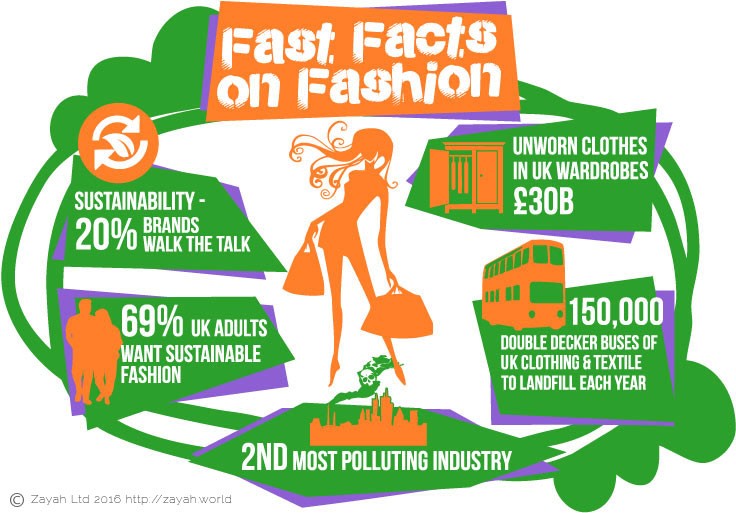

Dirty Secrets About the Environmental Impacts of the Cosmetics and Skincare Industries
All my thanks to GO GREEN for writing this very informative post for the Mademoiselle Organic readers!
The cosmetics and skincare industry is rushing to come up with green formulations, as well as more eco-friendly packaging to help reduce environmental impacts. One thing these industries are under fire for is their heavy use of plastics in their packaging. There isn’t a major brand on the market today that has not completely eliminated the use of plastics.
This is just horrible for the environment as they get stuck in landfills, or worse, in the stomachs of innocent and wild animals. Yet, several life-cycle analysis studies convey that the largest environmental impact of the cosmetic and skincare industry is at the consumer level. Take a look at the average grooming ritual, which includes:
- Shampoo
- Conditioner
- Soap
- Deodorant
- Lip balm
- Shaving products
- Sunscreen
- Body lotion
Many people use cosmetics and personal care items without a second thought, believing harmful chemicals will be regulated and discarded. Not so fast. In August 2005, scientists from the University of Rochester reported that prenatal exposure to phthalates — chemicals found in personal care products and other consumer products — could cause the reproductive organs of male infants to develop abnormally (Swan 2005).
Not to mention, according to a 2010 NIEHS study, the hormone systems of wildlife are agitated by personal care products that rinse down drains and into rivers. The question is, why do we need all of these chemicals in the first place?
Bad ingredients
Many cosmetics and skincare items are manufactured with over 10,500 unique chemical ingredients. Some are known carcinogens and either toxic to the reproductive system or known to disrupt the endocrine system. It’s almost as if we’re being openly sterilized.
The problem is no premarket safety testing is required in order to put industrial chemicals into skincare and cosmetics. According to the Office of Cosmetics and Colors at the federal Food and Drug Administration, “…a cosmetic manufacturer may use almost any raw material as a cosmetic ingredient and market the product without an approval from FDA.”
Yet, according to the European Commission in 2012, the EU has banned hundreds of chemicals in cosmetics. Another impact to the environment is cosmetic ingredients that were designed to penetrate. Scientists have found common cosmetic ingredients in human and wildlife tissues such as parabens in breast tumor tissue and phthalates in urine.
Surprising facts about breast cancer awareness marketing
Every October you’ll see people wearing a pink ribbon, and many cosmetic and skincare companies coming up with pink-colored promotions in order to donate to breast cancer research and awareness.
Still, many cosmetic companies, including Estée Lauder, Revlon, and Avon still create products with hormone-disrupting chemicals and carcinogens–two chemicals that can contribute to breast cancer. It’s a bit ironic that they are contributing to the fight against breast cancer when they contribute to the cause.
More research
In 2007, the Silent Spring Institute and Susan B. Komen for the Cure released a scientific review identifying 216 chemicals that cause breast cancer in animals. Many of these products are found in our homes such as detergents, PVC, shampoos, soaps and herbicides. Researchers wrote:
“The public health impacts of reducing exposures would be profound even if the true relative risks are modest. If even a small percentage is due to preventable environmental factors, modifying these factors would spare thousands of women.”
In 1997, during the Senate Hearings on the U.S. Food and Drug Administration (FDA) Reform Bill, the late U.S. Senator Edward Kennedy stated, “The cosmetics industry has borrowed a page from the playbook of the tobacco industry by putting profits ahead of public health.”
Yet, here is the key difference: tobacco products are labeled with explicit warnings on cancer risks. Yet, you don’t see these types of labels on cosmetics and skincare products. This is despite the fact that some of their ingredients pose unrecognized and lifelong dangers to the entire U.S. population, as well as the environment and wildlife. Here are the FDA regulations:
Each ingredient used in a cosmetic product and each finished cosmetic product shall be adequately substantiated for safety prior to marketing. Any such ingredient or product whose safety is not adequately substantiated prior to marketing is misbranded unless it contains the following conspicuous statement on the principal display panel: ‘Warning: The safety of this product has not been determined’
Unfortunately, the FDA has rarely exercised its authority over the past few decades. The only exceptions to products containing toxic ingredients are those with the certified organic label distributed by the U.S. Department of Agriculture.
Poisoning our planet
Here is a list of ingredients that negatively impact our environment.
- Cosmetics preservatives BHA and BHT have been known to kill fish and shellfish, as well as cause genetic mutations in amphibians.
- P-phenylenediamine, found in dark hair coloring and lipsticks, has killed many aquatic species.
- Dibutyl phthalate, or DBP, found in many nail polishes has been linked to aquatic life death, as well as killing off plant plankton.
- Triclosan, used in skin cleansers and deodorant, can change the biochemistry of fish, aquatic plants and amphibians.
- Diethanolamine, or DEA, can be found in almost all cosmetics and skincare products. When it accumulates in the environment, it reacts with nitrates to form highly carcinogenic nitrosamines. And nitrosamines are fatally toxic to animal plankton, flatworms, fish, crustaceans, amphibians and more. All life on earth is dependent on the water cycle. Chemicals transferred to our water system can vaporize into the clouds and come back down as rain. Hence, every living being is affected.
What can be done?
Due to consumer outrage and demand, an increasing number of companies are attempting to offer certified organic lines. It’s also up to us to do our research and to stop spending money on cosmetics and skincare lines that contain fatal chemicals. Not to mention, cosmetic and skincare companies have the option of registering their products with the Environmental Protection Agency–although, this is completely voluntary.
We all want to look our best, but let’s do so without harming the environment. How are you planning to change your cosmetic and skincare routine?
Is The ‘Clean Beauty’ Trend Cashing In On Climate Change?

Environmentalists and scientists have long struggled with getting people to see climate change as something that impacts their everyday lives, rather than a distant threat. With sales of cosmetic and personal care products marketed as ‘anti-pollution’, ‘eco-friendly’ and ‘natural’ rocketing in recent years, it would seem that, on the surface, the beauty industry has cracked this particular conundrum.
But given the beauty industry is itself a large polluter, are the companies selling products that promise to protect our skin and hair from pollution doing enough to address their role in creating it? Or are they simply cashing in on climate change?“The problem with ‘anti-pollution’ beauty products is that they are intervening at the wrong place in the system,” says Annie Leonard, executive director of Greenpeace USA.“At best, individual consumer products that claim to protect us from pollution may mislead us with marketing claims; at worst they may actually deter the real solutions when consumers feel like they have protected themselves, so are less inspired to work with others for the regulatory and business solutions that could protect everyone,” she says.As with fashion, sustainable beauty is a complex issue that spans the entire supply chain, from the raw ingredients to manufacturing processes, delivery, packaging and waste disposal.Looking at the cycle of water through the beauty supply chain illustrates this issue well. Water – or aqua, as it is often listed – is the main ingredient in a lot of beauty products. Large quantities of it are required to manufacture many of the synthetic chemicals used in them and deal with waste by-products. Because most beauty products are liquid chemicals, they need packaging that doesn’t disintegrate, such as plastic, which is also water- and energy-intensive to make. After manufacturing, the products are shipped to retailers, meaning more energy is used to transport what is mostly water.“The problem with ‘anti-pollution’ beauty products is that they are intervening at the wrong place in the systemANNIE LEONARD, GREENPEACE USA”Once in the home, products like shampoo and face wash need more water to rinse them off. The waste chemicals from these products — some of which are toxic — end up going down the drain and into our waterways. Then, even more water is required to wash the packaging so it can be recycled (although the majority of bathroom waste doesn’t even get recycled). Unrecycled plastic packaging that doesn’t end up in landfill finds its way into our seas and litters our beaches, harming marine life and getting into food chains.Several beauty brands are already making progress in reducing their water footprint, with ‘waterless beauty’ — which includes pastes, powders and no-rinse cleansers — set to be a big beauty trend. For example, brands like Ouai have created innovative dry shampoo formulas that don’t require rinsing, while Korean beauty brand Whamisa has brought out a range that uses botanical extracts instead of water.The quest for sustainable beauty has led to a rise in brands touting natural ingredients, with oils and extracts such as aloe, avocado, almond, and coconut. In a similar way to food, ‘clean beauty’ has emerged as a concept, propelled by the rise of beauty bloggers and the Gwyneths and Ellas of the world.While greater awareness of potentially-harmful chemicals — like parabens — used in many of our beauty products is undoubtedly a good thing, we should not assume that natural ingredients are necessarily better than synthetics for our health and the environment. In fact, doing so is “dangerous” says Dr. Richard Blackburn, a sustainability expert and chemist at the University of Leeds. “Nature makes plenty of toxic things,” he says. “There is nowhere near the level of scrutiny from a regulatory perspective on natural products than there is for synthetic chemicals.”Blackburn argues that with land and water in scarce supply, it is plain wrong to grow crops that can be used as food for beauty products instead. As a solution, his company, Keracol, has been developing sustainable beauty products that use food waste combined with synthetic chemicals – like its range for Marks and Spencer made from waste grape skins from wine production. Romilly Wilde is another beauty brand that combines chemistry and nature, using raw materials like algae from the sea with ‘bio identical’ synthetic chemicals which mimic natural ingredients.“With land and water in scarce supply, it is plain wrong to grow crops that can be used as food for beauty products instead”Luckily, many beauty brands, like Aveda and Neal’s Yard Remedies, are thinking about the whole sustainability picture. As consumers become increasingly careful about the ingredients in beauty products, this “has led to more and more brands jumping on the natural and organic ‘trend’,” says Helen Cooper, managing director of Neal’s Yard Remedies. “So for us it is now more important than ever to help our customers understand how to cut through the greenwash to make well-informed, healthy choices,” she says.Ultimately, the best way to deal with this complex issue is simply to use less. This doesn’t necessarily mean using lemon slices instead of deodorant or extolling the magical powers of baking soda, unless you’re into that kind of thing. But it does mean thinking about whether we really need such a vast array of cosmetic and beauty products in our lives; from the tiny free samples and sachets cluttering our bathroom cabinets, to the day/night/male/female version of the same face cream.Can we switch off our shower some days in favor of a quick rinse in the sink? Do we need to buy another red lipstick when we already own most shades on the spectrum? Can we buy our products in bulk or support retailers that allow us to reuse packaging?None of this is easy, of course. Getting clean, having a bath, putting on a face pack or makeup feels good. And the beauty industry drives us to over-consume with its marketing; the raison d’être of big beauty companies and retailers is to sell us more stuff – that’s why they segment us into categories like gender or age. That’s why they bombard us with endless new innovations and ‘must-buys’.Leonard says there is one great sustainable beauty product that we all should get on board with: activism. “It’s a lot more fun and emotionally rewarding than spending $75 for a small bottle of face cream.”

